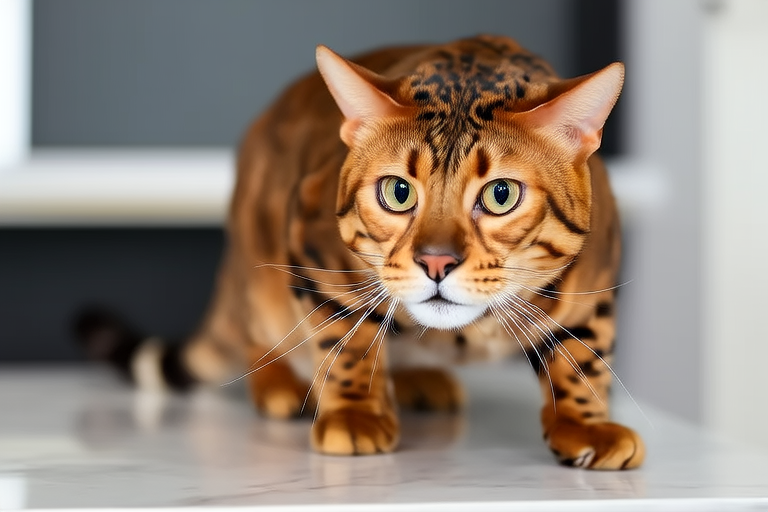The Ultimate Guide to Caring for Your Exotic Bengal Cat
Bengal cats are one of the most popular exotic breeds known for their striking appearance and playful personalities. Originating from the crossbreeding of domestic cats with Asian leopard cats, Bengal cats are often mistaken for small leopards due to their wild-looking coats. If you’re considering adopting a Bengal cat or already have one, this guide will provide you with everything you need to know about caring for your exotic pet.
Unique Characteristics of Bengal Cats
Bengal cats are easily recognizable by their sleek, muscular bodies and spotted or marbled coats that resemble those of wild felines. Their large, almond-shaped eyes add to their exotic allure. These cats are highly intelligent and active, requiring plenty of mental and physical stimulation. They are also known for their love of water, often playing with running faucets or splashing in shallow bowls of water.
Dietary Needs
When it comes to feeding your Bengal cat, it’s important to choose high-quality, nutritionally balanced food that meets their specific dietary needs. Bengals have higher energy levels than many other breeds, so they require more calories. Look for foods rich in protein and low in fillers. Wet food is generally preferred over dry food because it provides more moisture, which is beneficial for their overall health.
Dr. Emily Johnson, a veterinarian specializing in exotic pets, recommends rotating different types of meat-based proteins to prevent food allergies and maintain a balanced diet. She advises against feeding your Bengal table scraps or human food, as these can be harmful to their digestive system.
Grooming Requirements
Bengal cats have short, dense coats that require regular grooming to keep them looking their best. Despite their self-grooming habits, brushing your Bengal cat once or twice a week helps remove loose hair and prevents matting. Use a soft-bristled brush or a rubber grooming mitt to gently massage their skin while removing dead fur.
Experts suggest bathing your Bengal cat every few months to keep their coat shiny and healthy. However, since Bengals love water, some may enjoy baths more frequently. Always use a cat-specific shampoo and conditioner to avoid irritating their skin.
Exercise Recommendations
Due to their high energy levels, Bengal cats need ample opportunities to burn off excess energy through play and exercise. Interactive toys, such as feather wands or laser pointers, are great for engaging their minds and keeping them entertained. Providing climbing trees or shelves allows them to climb and explore, mimicking their natural hunting behaviors.
Outdoor enclosures or supervised outdoor time can offer additional stimulation for Bengal cats. However, it’s crucial to ensure their safety by enclosing the area securely and supervising them at all times. Dr. Johnson emphasizes the importance of regular exercise for maintaining a healthy weight and preventing behavioral issues.
Health Concerns Specific to the Breed
While Bengal cats are generally healthy, they are prone to certain genetic disorders. Hypertrophic cardiomyopathy (HCM), a heart condition, is one of the most common health issues affecting Bengals. Regular veterinary check-ups, including heart screenings, can help detect early signs of HCM.
Another concern is patellar luxation, a joint disorder where the kneecap slips out of place. This condition can cause pain and discomfort but is manageable with proper care and medication. Early detection and intervention are key to managing these conditions effectively.
Training Tips
Bengal cats are intelligent and can learn tricks quickly, making them relatively easy to train. Positive reinforcement methods, such as treats and praise, work best for teaching commands or tricks. Clicker training is particularly effective for rewarding desired behaviors instantly.
Real-life example: Sarah, a Bengal cat owner, successfully trained her cat to come when called using clicker training. She started by clicking the device whenever her cat approached her and immediately followed up with a treat. After several sessions, Sarah’s Bengal cat learned to associate the sound of the clicker with positive reinforcement and began responding to her calls.
Socialization Techniques
Socializing your Bengal cat from an early age is crucial for developing a well-adjusted adult cat. Expose them to various environments, people, and animals to help them become comfortable in different situations. Introduce new experiences gradually and positively, ensuring each encounter remains enjoyable for your cat.
For instance, if you plan to have visitors over, introduce your Bengal cat to guests slowly. Allow them to approach your cat on their own terms rather than forcing interaction. Encouraging gentle handling and positive interactions during playtime will help build trust between your cat and others.
Creating a Safe and Stimulating Environment
To ensure your Bengal cat thrives, create a safe and stimulating environment that encourages exploration and play. Provide multiple scratching posts and surfaces to satisfy their instinctual need to scratch. Rotate toys regularly to keep them interested and engaged. Additionally, consider adding puzzle feeders or interactive toys that challenge their problem-solving skills.
Security is paramount for any household with pets. Install childproof locks on cabinets containing hazardous substances, and secure windows to prevent accidental falls. Ensure that electrical cords are safely tucked away or covered to prevent chewing. A secure outdoor enclosure or harness training for supervised walks can provide additional enrichment while keeping your Bengal cat safe.
Conclusion
Caring for a Bengal cat requires dedication and attention to detail. By understanding their unique characteristics, meeting their dietary needs, maintaining proper grooming routines, providing adequate exercise, addressing potential health concerns, employing effective training techniques, fostering socialization, and creating a safe and stimulating environment, you can ensure your Bengal cat leads a happy and healthy life.
